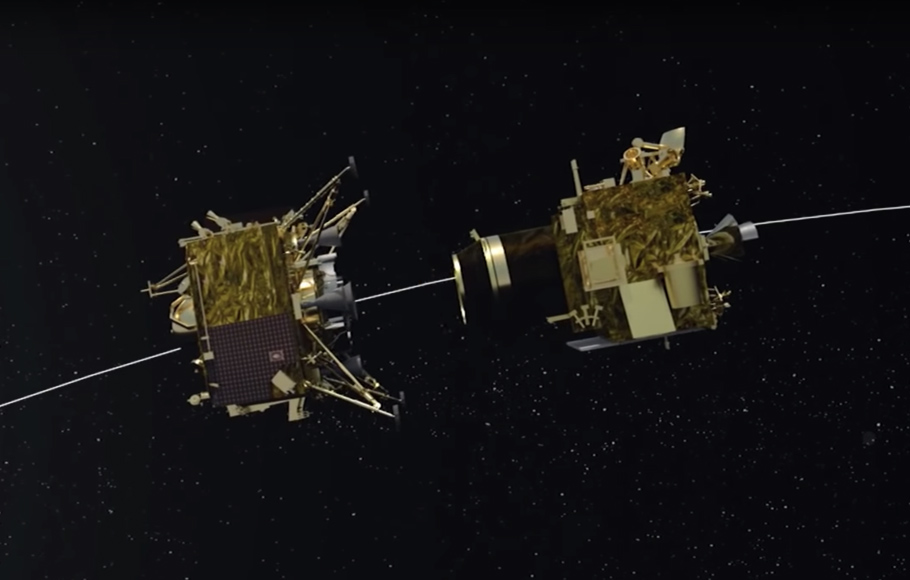
Chandrayaan-2: Vikram Lander successfully separates from Orbiter
The final and the fifth Lunar bound orbit manoeuvre for Chandrayaan-2 spacecraft was performed successfully at 6:21 PM (IST) on Sunday (September 1), the Indian Space Research Organisation (ISRO) said.

The Vikram Lander of Chandrayaan-2 spacecraft successfully separated from the Orbiter at 1.15 pm on Monday (September 2). The Indian Space Research Organisation (ISRO) announced the feat through a tweet on Monday.
#ISRO
Vikram Lander Successfully separates from #Chandrayaan2 Orbiter today (September 02, 2019) at 1315 hrs IST.For details please visit https://t.co/mSgp79R8YP pic.twitter.com/jP7kIwuZxH
— ISRO (@isro) September 2, 2019
On Sunday the final and fifth lunar bound orbit manoeuvre for Chandrayaan-2 spacecraft was performed successfully at 6:21 PM (IST).
While sharing the news on Twitter, the space agency said that the duration of the manoeuvre was 52 seconds and the orbit achieved was 119 km x 127 km. On August 30, the spacecraft had successfully performed it fourth Lunar bound orbit manoeuvre.
The Vikram Lander is expected to separate from the Chandrayaan-2 orbiter on Monday (September 2), following which, the Lander will perform two deorbit manoeuvres to prepare for its landing on the south polar region of the moon, the ISRO said. The final manoeuvres are expected to be performed on September 3 and 4.
#ISRO
The final and fifth Lunar bound orbit maneuver for Chandrayaan-2 spacecraft was performed successfully today (September 01, 2019) at 1821 hrs IST.For details please visit https://t.co/0gic3srJx3 pic.twitter.com/0Mlk4tbB3G
— ISRO (@isro) September 1, 2019
The Lander is scheduled to touch down on Lunar surface between 1:30 AM and 2:30 AM (IST) on September 7.
Earlier on August 26, the ISRO had shared an image of the moon’s surface taken by the Terrain Mapping Camera-2 (TMC-2) of the Chandrayaan-2. The picture was taken on August 23 at an altitude of about 4,375 km, and showed Jackson, Mach, Korolev and Mitra craters. The Mitra crater was named after Prof. Sisir Kumar Mitra, an Indian physicist from Kolkata.
On August 22, the space agency had released the first images of the moon captured by Chandrayaan-2’s LI4 Camera from an altitude of about 2,650 km from the lunar surface. Prior to that, the ISRO had on August 4 released the first set of images of the earth captured by Chandrayaan-2.
India’s Geosynchronous Satellite Launch Vehicle (GSLV) MkIII-M1 had successfully launched the 3,840-kg Chandrayaan-2 spacecraft into the earth’s orbit on July 22.
Chandrayaan-2 is an advanced version of the previous Chandrayaan-1 mission, which had 11 payloads and was credited for the discovery of water on the lunar surface.

